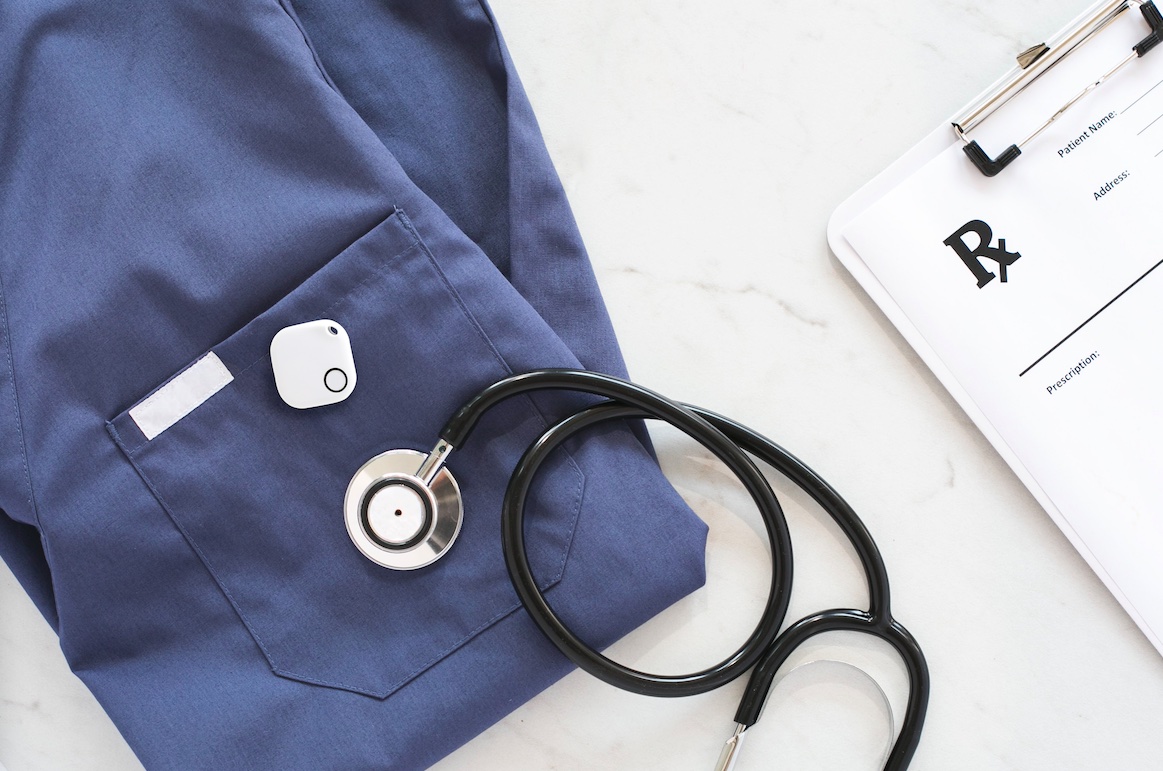
Healthcare workers, especially in psychiatric and drug addiction units, can face potential violence from patients during the scope of their work. Such violence has increased during the course of the pandemic. For example, Scripps Health in San Diego, California reported a 17% increase in violence against staff from December 2020 to December 2021.
Such an increase amongst an already taxed healthcare work force that is overextended and overworked begs the question: What is to be done to keep our healthcare workers safe? Besides additional staffing, some proposed increasing the charges for such violence against workers. But there could be other, tech-based, solutions too.
One company is addressing violence against healthcare workers with a panic button. Philadelphia-based ROAR for Good makes the AlwayOn button that nurses wear to easily call for help when a situation seems to be escalating so the facility can deploy staff to the site quickly.

Nurse wearing ROAR for Good’s product: AlwaysOn.
In practice, the current protocol to protect against violence entails attempting to diffuse situations as they arise and then reporting the incident after it happened if it did not deescalate appropriately.
The Behavioral Wellness Center in Philadelphia – a behavioral hospital that has psychiatric and addiction services – is already implementing AlwaysOn. Nurses clip the AlwaysOn button onto their scrubs. The quarter-sized button works via wireless alert technology and does not rely on the internet. When a situation escalates, the provider can push the button, which sends a help signal to the nurses’ station along with the exact room location of the button. Additional staff – who are at the nurses’ station – can then quickly relocate to help. If the wearer moves to a different room, the signal updates accordingly so more people go to the location in need.

A Deep-dive Into Specialty Pharma
A specialty drug is a class of prescription medications used to treat complex, chronic or rare medical conditions. Although this classification was originally intended to define the treatment of rare, also termed “orphan” diseases, affecting fewer than 200,000 people in the US, more recently, specialty drugs have emerged as the cornerstone of treatment for chronic and complex diseases such as cancer, autoimmune conditions, diabetes, hepatitis C, and HIV/AIDS.
“The psych side in particular [has] several units where we have clients who are very sick. There is and can be some violence. We have additional staff on hand, but there are times there is not enough staff on hand, especially on later shifts, and there is a chance for violence,” said Doug Maier, CFO for the Behavioral Wellness Center in Philadelphia. “[AlwaysOn] gives employees a sense of feeling safe. It’s incumbent upon us to make them feel safe.”
 The AlwaysOn panic button can be worn on scrubs
The AlwaysOn panic button can be worn on scrubs
Maier explained that the button has a secondary benefit, too: patients see the panic button and it decreases violent behavior before it happens, since patients know help will arrive quickly.
In the wake of Covid-19 and ever increasing provider burnout, it can be hard to find enough staff. AlwaysOn attempts to make the job safer, lessening one barrier to finding and retaining good help, according to Maier.
“I was really focused on what do people think. And I just got such positive feedback from the employees that they liked [AlwaysOn]. That it felt good. It felt safe. And we were at a point where we were starting to get exposed to some acts of violence, so it was perfect timing for us [to use AlwaysOn],” said Maier.
Each AlwaysOn unit can cost around $1-$2 dollars per employee, per day based on a five year term, according to Peter Klebanoff, senior vice president of sales and marketing at ROAR for Good, in an email forwarded from a representative.
Photo: Getty Images; ROAR for Good













